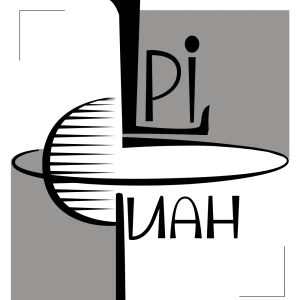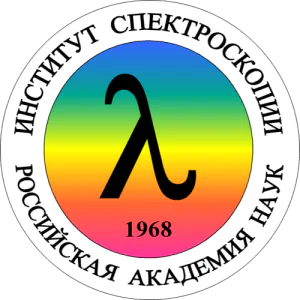Photoluminescence thermal quenching of yellow-emitting InP/ZnS quantum dots
Publication type: Proceedings Article
Publication date: 2018-09-26
SJR: 0.153
CiteScore: 0.5
Impact factor: —
ISSN: 0094243X, 15517616
Abstract
Photoluminescence of the QDs ensemble with an average particle size of 2.1 nm are investigated in 6.5–296 K range. A low-energy shoulder appears in the spectrum with temperature decrease and at 6.5 K two maxima with energies Ed = 2.07 eV and Ex = 2.35 eV are observed. These bands are shown to stem from defect-related and exciton transitions. Temperature shift of the latter is caused by interaction with effective phonons of 18 meV energy. The spectrum is suggested to experience strong inhomogeneous broadening. A Stokes shift of the Ex peak drops from 360 to 330 meV with temperature increase implying exciton fine structure. An analysis of quenching processes indicates the dominant contribution of the Ed band and the presence of two nonradiative relaxation channels with Eq1 = 95 meV and Eq2 = 16 meV activation energies. Emission chromaticity changes from yellow with (0.42, 0.54) coordinates to yellow-green with (0.34, 0.60) ones upon heating in the specified temperature range.Photoluminescence of the QDs ensemble with an average particle size of 2.1 nm are investigated in 6.5–296 K range. A low-energy shoulder appears in the spectrum with temperature decrease and at 6.5 K two maxima with energies Ed = 2.07 eV and Ex = 2.35 eV are observed. These bands are shown to stem from defect-related and exciton transitions. Temperature shift of the latter is caused by interaction with effective phonons of 18 meV energy. The spectrum is suggested to experience strong inhomogeneous broadening. A Stokes shift of the Ex peak drops from 360 to 330 meV with temperature increase implying exciton fine structure. An analysis of quenching processes indicates the dominant contribution of the Ed band and the presence of two nonradiative relaxation channels with Eq1 = 95 meV and Eq2 = 16 meV activation energies. Emission chromaticity changes from yellow with (0.42, 0.54) coordinates to yellow-green with (0.34, 0.60) ones upon heating in the specified temperature range.
Found
Nothing found, try to update filter.
Found
Nothing found, try to update filter.
Top-30
Journals
|
1
|
|
|
Nanomaterials
1 publication, 12.5%
|
|
|
Journal of Luminescence
1 publication, 12.5%
|
|
|
Russian Chemical Bulletin
1 publication, 12.5%
|
|
|
Analytical Methods and Instruments for Micro- and Nanomaterials
1 publication, 12.5%
|
|
|
Russian Chemical Reviews
1 publication, 12.5%
|
|
|
ACS Omega
1 publication, 12.5%
|
|
|
Physical Chemistry Chemical Physics
1 publication, 12.5%
|
|
|
Journal of Physical Chemistry C
1 publication, 12.5%
|
|
|
1
|
Publishers
|
1
2
|
|
|
Springer Nature
2 publications, 25%
|
|
|
American Chemical Society (ACS)
2 publications, 25%
|
|
|
MDPI
1 publication, 12.5%
|
|
|
Elsevier
1 publication, 12.5%
|
|
|
Autonomous Non-profit Organization Editorial Board of the journal Uspekhi Khimii
1 publication, 12.5%
|
|
|
Royal Society of Chemistry (RSC)
1 publication, 12.5%
|
|
|
1
2
|
- We do not take into account publications without a DOI.
- Statistics recalculated weekly.
Are you a researcher?
Create a profile to get free access to personal recommendations for colleagues and new articles.
Metrics
8
Total citations:
8
Citations from 2024:
4
(50%)
Cite this
GOST |
RIS |
BibTex
Cite this
GOST
Copy
Savchenko S. S., Vokhmintsev A. S., Weinstein I. A. Photoluminescence thermal quenching of yellow-emitting InP/ZnS quantum dots // AIP Conference Proceedings. 2018.
GOST all authors (up to 50)
Copy
Savchenko S. S., Vokhmintsev A. S., Weinstein I. A. Photoluminescence thermal quenching of yellow-emitting InP/ZnS quantum dots // AIP Conference Proceedings. 2018.
Cite this
RIS
Copy
TY - CPAPER
DO - 10.1063/1.5055158
UR - https://doi.org/10.1063/1.5055158
TI - Photoluminescence thermal quenching of yellow-emitting InP/ZnS quantum dots
T2 - AIP Conference Proceedings
AU - Savchenko, S S
AU - Vokhmintsev, A S
AU - Weinstein, I A
PY - 2018
DA - 2018/09/26
PB - AIP Publishing
SN - 0094-243X
SN - 1551-7616
ER -
Cite this
BibTex (up to 50 authors)
Copy
@inproceedings{2018_Savchenko,
author = {S S Savchenko and A S Vokhmintsev and I A Weinstein},
title = {Photoluminescence thermal quenching of yellow-emitting InP/ZnS quantum dots},
year = {2018},
month = {sep},
publisher = {AIP Publishing}
}
Profiles










